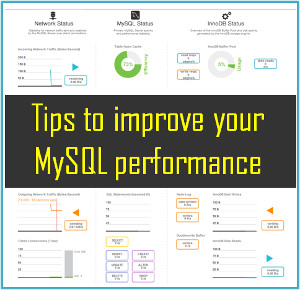IT in 2016: Make or Break for Banks?
Published on 31 December 15
0
1
The year that’s just about completely gone by witnessed pretty much all that had been predicted for it in terms of developments in IT and their impact on our world. In 2014, we all knew that cloud, mobile, analytics, and digital media would be key themes for IT in almost all industry sectors in 2015, and there weren’t too many surprises there. In 2016, we expect to see even greater impact from all of these, and maybe a few more.
So what then, will be really different in 2016 apart from merely a greater pervasiveness of these same technologies?

In my view, the key difference will be that existing business models will give way to new and disruptive ones. This will happen for the simple reason that delivering better and better results each year cannot keep happening merely by squeezing greater efficiencies out of what are fundamentally the same models. There is a limit to which this can be done and 2016 may well be a year of more emphatic and truer macro business transformation than ever before. This transformation will all be enabled by maturing developments in IT.
Ever since the global economic crash of 2008, banks, just like any other industry sector that was negatively impacted, have been trying to cut costs and operate more efficiently in their attempts to align themselves to the sharply revised valuation of the world’s monetary supply. But while they’ve been doing that, they have also had to increase their IT spending in meeting all the new regulations that they have been asked to accept. The net result is that they have continued to struggle, barring those that received government bailouts.
By mid-2015, however, a question mark had appeared against some parts of the banking industry: about whether their efforts to improve productivity while reducing costs have been enough to meet the expectations of customers that are now empowered as never before by the ease with which they have access to all kinds of data. Banks have not given up, but IT enablers have changed the playing field completely. The costs of transacting have still not been lowered enough in the traditional banks, and neither consumers nor technology-based innovators are going to wait for them anymore.
The banking and financial services sectors will see even more innovation in 2016. This time, however, the innovation will bring not just improvements, but disruptive transformation.
- 2015 saw significant growth in aggregator businesses, payment banks, a sharp uptake in mobile wallets and payment banks, the rise of peer to peer lending, and digital marketplaces for financial services. All of these have been enabled largely by IT, and have marked the entry of non-BFSI players (such as retailers and non-banking conglomerates) into offering such services that were so far the monopoly of banks. These are some of the new business models and areas that banks will either have to compete with or exit from.
- Digital banking is on the rise, and with that, spending on information security solutions will continue to grow as more and more issues, loopholes, risks and threats arise.
- The adoption of blockchain technology will continue, perhaps not necessarily to support bitcoin as a currency, but more as a means of providing a new and secure way of guaranteeing document transactions. The implication of transacting via blockchain is that the technology eliminates the need for a third party trustee between the buyer and seller. The third party trustee is, of course, a traditional bank.
- Some governments (for example, those in some parts of Asia) have been under more pressure than ever to bring banking services to the unbanked. Technology has introduced new business models (such as for payments, for example) that have enabled such inclusion, and it may therefore be this governments in this part of the world that lead the way in establishing regulatory frameworks around these new technology-based BFSI sector businesses.
- The creation and invention of new technologies and innovative uses for them may continue to be the strength of IT product vendors in the developed world given their historic momentum and facilitative environments available for R&D. In addition, the use of new technologies in additional innovative ways may be equally proven with new use cases in the developing world as well. This is because in the developing world private enterprises are growing faster than physical infrastructure and support can be made available to them by their governments, and they are compelled to reach their target consumer base in new ways.
- Click and mortar business models will flourish, as banks and financial services companies will need to increasingly offer and deliver as much of their services as they can in digital form. They will still need to keep reducing the cost of operation, however, and shift as much as they can to the digital format through the increased adoption of technology for longer term prediction, short term anticipation and near real time fulfilment.
- Huge new innovations in analytics, and particularly in machine learning, and their availability in open source formats will be another key enabler for a transformation in personalization of offerings and services.
- Consumers have now become completely used to tapping a mobile screen rather than clicking a PC mouse. In fact their expectations have moved to being able to seamlessly work and sync data between applications on a mobile, while also reading, speaking and sharing their thoughts on the same device. Whatever hasn’t already become available on a mobile platform will need to become so in 2016.
- The cloud, meanwhile, will continue to be an ever more complete platform for all the back-end application functionality that is required for this. The major providers such as Amazon, Google, IBM, Oracle, Microsoft and others and others have not only strengthened their cloud offerings, but are also making available their machine learning service APIs to allow for an even more complete and intelligent consumer experience. Banks have already been early adopters of cloud technology, so further exploitation of it may not be resisted, although security will continue to remain a focus area. Using the cloud as a platform also provides the advantage of having a greatly reduced investment in infrastructure planning, support and setup lead time.
- There will be new trends for the IT workforce as well. As the centre of gravity of the world’s economy keeps shifting around over time, introducing uncertainty, caution and optimism in balance, governments all around the world may be adopt increasingly protectionist stances to protect their own labour forces. At the same time, advances in communication and mobile technology have already been exploited as much as they can in terms of facilitating offshoring and telecommuting. This will bring an increased demand for technologists to not only be able to deal with technical complexity but increasingly sharpen their business domain capabilities. An additional reason that they will be compelled to do so is that a lot of technologies are today available as complete frameworks that are ready to use, and so the pressure on IT professionals will be more to also function as architects who can make big picture choices around frameworks, and come up with innovative ideas rather than only be developers who can work with language syntax, code structure and bugs. In addition, there will be a huge need for user experience skills that span across an understanding of the business domain, marketing, user behaviour, technical practicality, user ergonomics and, of course, aesthetics. While technical Big Data skills is slowly becoming a commodity, there will continue to be a shortage of data scientists who also have a strong enough ability to extract the right data, run statistics on it, and come out with meaningful business interpretations of the results.
In a nutshell, in 2016, as true change continues to be demanded of the banking operating models and business models, IT will be be in the forefront not only to be an enabler, but as a very platform for industry transformation.
This blog is listed under
Development & Implementations
, Industry Specific Applications
, Data & Information Management
and E-Commerce
Community
Post a Comment
You may also be interested in
Share your perspective

Share your achievement or new finding or bring a new tech idea to life. Your IT community is waiting!

 Mario Lewis
Mario Lewis








